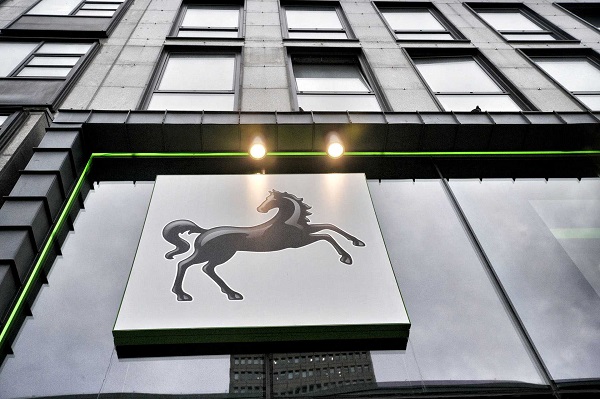As the financial markets enter 2025, Lloyds Banking Group, one of the UK’s most prominent financial institutions, finds itself at a critical juncture.
The bank’s share price has been under the microscope due to evolving regulatory landscapes, macroeconomic pressures, and shifting investor sentiment.
Analysts are offering mixed outlooks on what the year holds for Lloyds, presenting a complex picture of opportunities and challenges.
The Current Landscape
In 2024, Lloyds’ share price demonstrated resilience amid market volatility. The bank reported robust third-quarter pre-tax profits of £1.8 billion, surpassing analysts’ expectations of £1.6 billion.
However, the share price response was muted, as much of the positive performance was already factored into earlier market valuations.
By the end of 2024, Lloyds’ shares had seen a roughly 28% increase in market capitalization compared to the start of the year, bolstered by strong earnings and stable dividends.
Entering 2025, Lloyds’ share price surged more than 5% on January 21 following news of Chancellor Rachel Reeves’ intervention in a Supreme Court case concerning mis-sold car loans.
Reeves’ efforts to protect car loan providers from substantial compensation payouts were seen as a move to mitigate a significant risk for Lloyds and its peers. This regulatory development underlined how external factors continue to play a significant role in shaping the bank’s valuation.
Key Drivers for 2025
- Regulatory Environment: The outcome of the car loan mis-selling case could set a precedent for future compensation claims across the industry. Analysts have highlighted that a favorable ruling for financial institutions could remove a significant overhang on Lloyds’ share price, while an unfavorable decision may lead to heightened costs and provisions.
- Interest Rate Dynamics: With the Bank of England expected to maintain higher interest rates throughout 2025 to combat inflation, Lloyds stands to benefit from improved net interest margins. Analysts at Barclays forecast that the bank’s earnings could grow by an additional 5% if interest rates remain above 5% for most of the year.
- Economic Conditions: The UK economy’s performance will be crucial. A slowdown or contraction could lead to higher loan defaults, pressuring Lloyds’ profitability. Conversely, sustained growth could boost consumer and business lending, driving revenue expansion.
- Digital Transformation: Lloyds continues to invest heavily in digital banking initiatives, aiming to enhance customer experiences and reduce operational costs. Analysts at JP Morgan believe that these investments could significantly improve the bank’s efficiency ratios by the second half of 2025, providing a medium-term catalyst for the share price.
Analysts’ Perspectives
Market analysts are divided on Lloyds’ outlook for 2025, reflecting the inherent uncertainties facing the sector:
- Bullish Outlook: Jefferies analysts recently upgraded Lloyds to a “Buy” rating, citing its strong capital position and attractive valuation metrics. They believe the bank is well-positioned to navigate the current economic environment and anticipate a 15% upside in its share price by year-end.
- Cautious Optimism: UBS maintains a “Neutral” rating on Lloyds, highlighting its potential for steady dividend growth but cautioning against over-reliance on interest rate-driven earnings. They suggest that any economic downturn could dampen the bank’s performance.
- Bearish Sentiment: Some analysts, such as those at Credit Suisse, express concerns about the long-term impact of regulatory challenges and a potential cooling of the UK housing market. They argue that these factors could weigh on Lloyds’ mortgage lending business, a key revenue driver.
What to Watch
- Earnings Reports: Quarterly updates will provide critical insights into how Lloyds is managing costs, loan defaults, and capital allocation.
- Regulatory Developments: The Supreme Court ruling on car loan mis-selling and other regulatory changes could materially impact the share price.
- Macroeconomic Trends: Inflation, GDP growth, and employment levels in the UK will all influence the bank’s performance.
- Investor Sentiment: Share buybacks or increased dividend payouts could enhance investor confidence and drive valuations higher.
Conclusion
The outlook for Lloyds Banking Group’s share price in 2025 is both promising and uncertain.
While the bank has demonstrated resilience and strategic agility, external factors such as regulatory decisions and economic conditions will be pivotal in shaping its performance.
For investors, staying informed and monitoring key developments will be essential in navigating the year ahead.
Whether Lloyds emerges as a standout performer or faces headwinds will largely depend on its ability to adapt to an ever-changing financial landscape.
Also Read
UK Chancellor Rachel Reeves Intervenes in Car Loan Mis-Selling Case
The World’s Top 10 Richest People in 2025: A Closer Look at Their Fortunes

